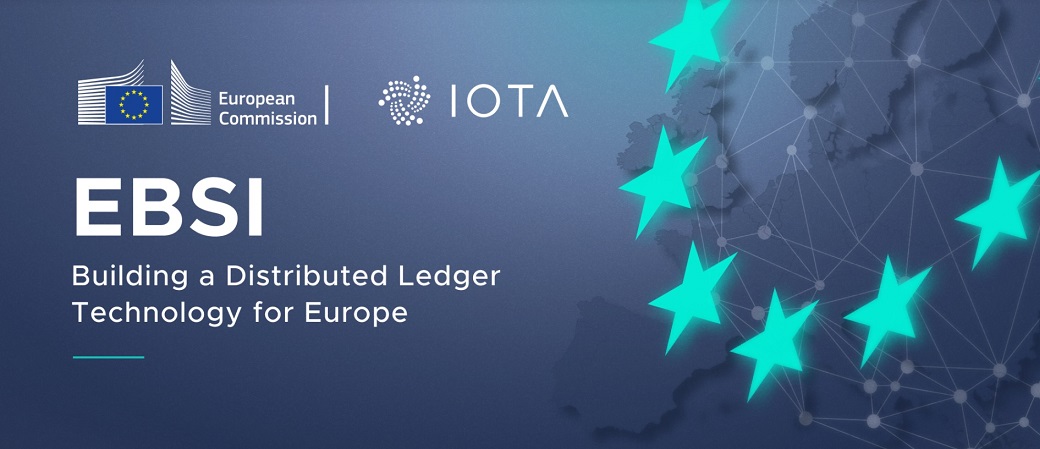
The IOTA Foundation announced that it has been selected as one of 7 projects from 30+ applications, to participate in the first phase of the EU blockchain pre-commercial procurement process. This aims to design new DLT solutions to improve the scalability, energy efficiency and security of EBSI, a network of blockchain nodes across Europe. If selected for the next phase, IOTA could be one of the technologies that will be developed and tested with core European services.
After three months, it is expected around four of the seven projects will be selected for phase two, which will last for six months; it is in this phase that new technologies and applications will be prototyped with the appropriate data sets and tools. After that, around two projects will be chosen for the final, 12-month phase where the capabilities of the newly developed infrastructure and applications (e.g. digital product passport, IPR management cases) will be tested.
The digitization of public services across the European Union has taken a substantial leap forward with EBSI, the European Blockchain Services Infrastructure, which wants to be a blockchain for Europe. The IOTA Foundation – the non-profit organization behind the Tangle, an open-source, scalable, feeless, and permissionless distributed ledger technology (DLT) – is participating in the EU blockchain pre-commercial procurement that is piloting new solutions that could help improve future evolutions of EBSI.
Started in 2019 by the European Blockchain Partnership, the European Blockchain Services Infrastructure (EBSI) aims to develop a network of nodes across Europe to support cross-border services between governments, enterprises, and citizens (i.e. public administration). The idea is to improve the efficiency and trust of EU-wide transactions, enhance the mobility of citizens, enterprises, and goods, reduce Europe’s environmental impact, in a way that respects compliance with EU regulations, and encourages the growth of tech hubs and projects.
The network’s nodes are run on the European level by the European Commission, and on a national level by member countries of the European Blockchain Partnership. Planned use cases range from the digital management of educational credentials, the establishment of trusted digital audit trails and document traceability, SME financing, data sharing among authorities, and digital identification. Read more about the current version of EBSI and its use cases here.
For future EBSI evolutions, there has been a thorough pre-commercial procurement process to find new DLT-based solutions for more scalable, high-velocity, high-volume cross-border blockchain services. The aim is that such type of novel solutions can provide the future evolution of EBSI with new capabilities for improved speed, transaction volume, environmental sustainability, scalability and security.
IOTA technology answers EBSI’s stated goals of being scalable, open, decentralized, and interoperable. It is permissionless by nature, but can support permissioned environments (using the IOTA Smart Contract Platform), and can grant permission to resources and control data distribution to comply with EU regulations for data sharing. The network needs to support high-throughput and a large number of nodes, and each Member State should be able to run its own code or set of nodes. As an open, feeless, and scalable distributed ledger, designed to support frictionless data and value transfer, IOTA meets these requirements.
The Tangle – IOTA’s answer to the blockchain – is inherently scalable, decentralized, and built on open software. IOTA’s feeless nature also makes micropayments possible and opens up the network to a broader potential audience. Anyone can afford to use it, whereas the cost of transactions on other blockchains makes transferring small values (for example, the cost of stamping a single document) prohibitive.
IOTA’s green credentials – no miners working on Proof of Work means much less energy spent in comparison to other blockchains – is another driver of scalability, and complements the European Green Deal, the EU’s overarching aim of making Europe climate neutral in 2050. IOTA also aims to support data sharding, whereby only a portion of the network handles transactions.
IOTA Foundation is offering its advanced core technology, packaging it with additional solutions required for integration into the EBSI infrastructure. These include second-layer interoperability and third-layer provisioning. For the latter, IOTA Foundation has joined forces with Software AG, which will take care of system integration during the procurement phases, future provisioning, and potential exploitation of the associated services.
Banking 4.0 – „how was the experience for you”
„To be honest I think that Sinaia, your conference, is much better then Davos.”
Many more interesting quotes in the video below: